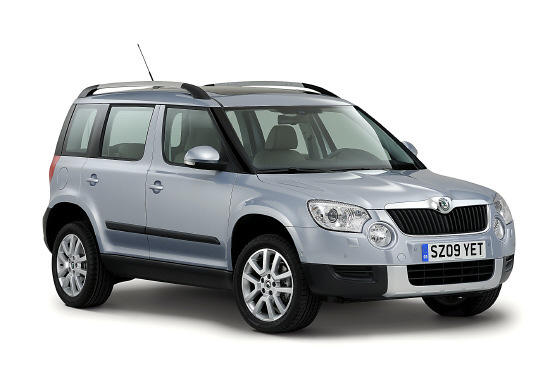Spend some time picking the right model and the Skoda Yeti offers a monster of a deal.
At its launch, Skoda representatives quite freely admitted they pinched the idea for the Yeti from Nissan, green-eyed as they were with the success of the Japanese firm’s Qashqai.
They were canny enough to at least make the Yeti look quite different from its rival, though, and they’ve also designed a car that not only matches and possibly exceeds the Qashqai’s fine abilities, but may be the best car Skoda has ever made.
A versatile five-seater with a high-up driving position and tons of load space, the Yeti is available in front or four-wheel drive.
Four-wheel drive Yetis are actually pretty decent off-road, coming with hill-hold control and an off-road button that changes the car’s set-up to prepare it for such challenges as rock-crawling or steep descents.
Although no match for a Discovery or Land Cruiser, it’ll get further off the beaten track than most of the current crop of ‘soft road’ SUVs.
It’s also much cheaper than most of them. Starting at £13,775 for the 1.2 litre turbo-charged petrol and £15,065 for the 2.0 TDI model, it’s aimed at those who want much of the experience of a larger 4×4 but without the cost, or at Focus/Astra/Golf drivers who want something roomier and better suited to bad weather. There’s also a 1.8 litre, 160bhp petrol engine but Skoda don’t expect to sell many of these in Britain.
I drove the top-of-the-range 2.0 TDI Elegance version, which weighs in at £21,370 — though a £1400 sat nav system and 12-speaker stereo nudged that above £23,000.
Although that seems a lot for a Skoda it’s still good value when you consider it comes with full leather interior, bi-xenon headlights with cornering function, rain sensing wipers and automatic headlights, heated front seats and electric windows all round.
The 2.0 litre diesel will be familiar to Volkswagen drivers. It’s a sound, bullet-proof unit, not the most refined (it’s a little noisy until it warms up) but plenty powerful, and it delivers good economy.
The Yeti gets from 0-62mph in under 10 seconds and has a top speed of 118mph. Fuel economy is 46.3mpg, making it very frugal indeed for its size.
It has a nice, high-up driving position and avoids too much body roll in cornering. Ride is comfortable and on the motorway a mild but audible grumble from the diesel engine is the only irritation.
In the boot, there’s 416 litres of space, including a handy partition for a couple of shopping bags which prevents your groceries from spilling out.
The cleverly-designed rear seats can either fold flat or be removed entirely (there’s a very easy mechanism and they don’t weigh much), giving a cavernous 1760-litre load space.
There’s plenty of room for four, and enough for five if those in the back don’t mind rubbing shoulders. My only complaint about the interior is that it’s very dark and I’d say the £800 for a panoramic glass sunroof would be an investment you wouldn’t regret.
Spend around £17,000-£18,000 on a mid-level version and you’ll have one of the most well-rounded cars available for the money.
Price: £21,370.
0-62mph: 9.9 seconds.
Top speed: 118 mph.
Economy: 46.3 mpg.
CO2 emissions: 159 g/km.
